Breathe in …the Airway Monitoring Experiment.
I remember clearly the long discussions we had when I worked as a lifeguard many years ago: should we give heart patients in need “nitroglycerine spray”? On the one hand, the nitro spray can provide fast relief to people suffering from heart conditions – on the other hand it can quickly drop a patient’s blood pressure, which should be avoided at all costs in an emergency. We decided against it – and we took the right decision.
A nitroglycerin spray acts on nitric oxide which is produced by the human body itself and is a good indicator of airway inflammation: a higher amount of nitric oxide in exhaled air indicates an inflammation. How this works exactly and how air pressure and gravity-influenced blood flow can affect readings were researched in the complex “Airway Monitoring” experiment last Friday on the Space Station.
The results are important for basic medical research and for future manned missions to other celestial bodies. Moon and Mars dust is very aggressive so not only do mechanical parts that are exposed need to be prepared, experts are also having headaches about how to protect the human respiratory tract. Inevitably dust will collect in air locks and spacesuits in the air of lunar or Mars stations. In these cases it will be important to get early signs of airway inflammation…
ESA astronaut Samantha Cristoforetti and NASA astronaut Terry Virts had begun preparations for the experiment on Thursday. They brought the equipment into the Quest airlock, which is usually used as a door to the outside of the International Space Station. Barry Wilmore as Crew Medical Officer was also briefed to standby his colleagues during the experiment.
On Friday, the experiment started with Samantha and Terry started to reduce the pressure in the American airlock. The complicated procedures for this were developed through international teamwork. The expertise of the Danish DAMEC Center worked with flight surgeons, the team in Houston that controls the airlock, and us at Oberpfaffenhofen. At the Columbus Control Centre Katja Leuoth and Marius Bach supported the astronauts from the control room. This support was important as the astronauts needed support for such a complex experiment. The ground team found solutions in real-time for some questions, others needed more in-depth study and analysis. Now it is over to the scientists: the data must be processed and evaluated – and a decision must be made to continue with more experiment runs. The Columbus Control Centre will be ready to put the astronauts back in the airlock to answer their questions and pave the way for future missions landing in “thin air”…
Col-CC
More information here: https://plus.google.com/+SamanthaCristoforetti/posts/MtNoDoiRMfZ https://plus.google.com/+SamanthaCristoforetti/posts/boWGMq3mPgX https://www.esa.int/spaceinimages/Images/2015/03/Samantha_working_on_Airway_Monitoring
13/03/2015






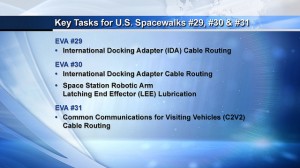
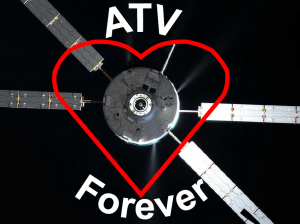
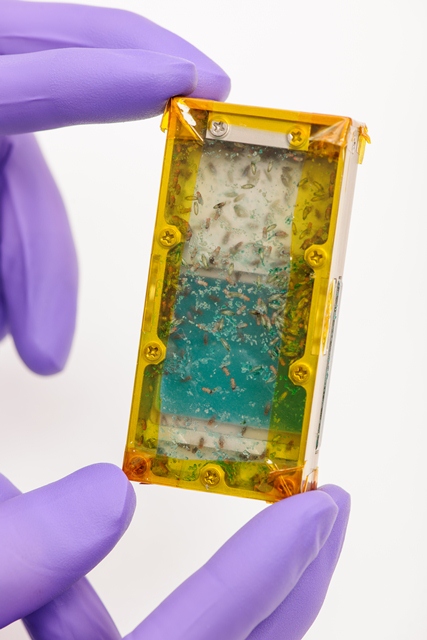 Then it means you are useless since we already know about these diseases in humans, what is your purpose?
Look, try switching on your brain, please. Scientists know about the genetic diseases of humans, but it is difficult to study the genetic transmission of a disease as it spans the lifetime of a human being, around 70-80 years. We reproduce very fast: our life spans a couple of your weeks and each female lays around 600 eggs. Get where we are going? Our genome is transmitted in real-time, “live” in front of scientists eyes, to many descendants.
From your reaction it seems as though you still do not get it, do you?
But how many are going to space?
We start with a little more than 100. It is the mechanism of genetic transmission that interests scientists, understand? And we show it to them, generation after generation.
But why on the International Space Station?
Because there is no gravity up there. And gravity could be an important part of genetic transmission. Our scientists have created a beautiful experiment!
Tell me more … how does it work?
The Fruit Lab System has three components: a small housing compartment in which we launch. A second compartment is where we live and get fed and where our larvae are extracted.
What do the astronauts do with your larvae? Do they eat them? Are you fresh food?
What??? Where do you come from? The larvae are stored in a refrigerator called MELFI where our offspring are preserved and brought back to Earth for further study.
There is a third housing compartment, where we can fly freely, assuming we are not affected by weightlessness too much. Here scientists mounted a camera to watch us 24 hours a day. A sort of Big Brother for fruit flies. A number of us live in weightlessness while others live in a small centrifuge to simulate Earth’s gravity. The larvae we produce are frozen, brought back to earth and studied.
Are you really convinced that something interesting for mankind may come out of this?
Of course, this is what we aim for and the scientists whom we are trying to help. We have been helping humans to understand how their bodies function for over a century!
If you want to educate yourself, we have a dedicated blog on this experiment:
Then it means you are useless since we already know about these diseases in humans, what is your purpose?
Look, try switching on your brain, please. Scientists know about the genetic diseases of humans, but it is difficult to study the genetic transmission of a disease as it spans the lifetime of a human being, around 70-80 years. We reproduce very fast: our life spans a couple of your weeks and each female lays around 600 eggs. Get where we are going? Our genome is transmitted in real-time, “live” in front of scientists eyes, to many descendants.
From your reaction it seems as though you still do not get it, do you?
But how many are going to space?
We start with a little more than 100. It is the mechanism of genetic transmission that interests scientists, understand? And we show it to them, generation after generation.
But why on the International Space Station?
Because there is no gravity up there. And gravity could be an important part of genetic transmission. Our scientists have created a beautiful experiment!
Tell me more … how does it work?
The Fruit Lab System has three components: a small housing compartment in which we launch. A second compartment is where we live and get fed and where our larvae are extracted.
What do the astronauts do with your larvae? Do they eat them? Are you fresh food?
What??? Where do you come from? The larvae are stored in a refrigerator called MELFI where our offspring are preserved and brought back to Earth for further study.
There is a third housing compartment, where we can fly freely, assuming we are not affected by weightlessness too much. Here scientists mounted a camera to watch us 24 hours a day. A sort of Big Brother for fruit flies. A number of us live in weightlessness while others live in a small centrifuge to simulate Earth’s gravity. The larvae we produce are frozen, brought back to earth and studied.
Are you really convinced that something interesting for mankind may come out of this?
Of course, this is what we aim for and the scientists whom we are trying to help. We have been helping humans to understand how their bodies function for over a century!
If you want to educate yourself, we have a dedicated blog on this experiment:
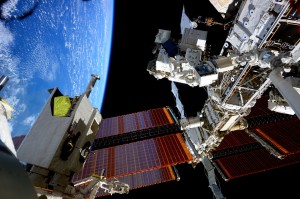 Once the daily activities are completed, it is time for the eDPC (“evening Daily Planning Conference”). This is “goodnight” time: interactions with the crew on the Space-to-Ground voice channels are interrupted to allow them some well-deserved rest time, we also switch off any camera inside the space station! Only in case of contingency scenarios the Ground Teams would make contact again.
Once the daily activities are completed, it is time for the eDPC (“evening Daily Planning Conference”). This is “goodnight” time: interactions with the crew on the Space-to-Ground voice channels are interrupted to allow them some well-deserved rest time, we also switch off any camera inside the space station! Only in case of contingency scenarios the Ground Teams would make contact again.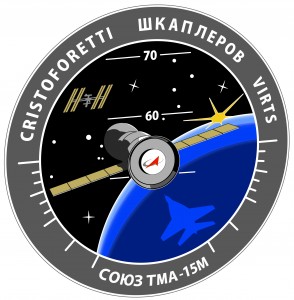 At this point, if you are a fan of flight simulators, you might have guessed what it might look like. Here is a third clue. imagine three tennis players inspired by their tennis racket.. Or three cyclists had taken the handlebar as a suggestion. Is it clear? No? Okay, will tell you: do you know the instrument on an aircraft’s dashboard showing the vehicle’s attitude during the flight? Yes, the one that tells the pilot the aircraft is pointing in the right direction? It is one of the most important tools for a pilot: the attitude indicator or artificial horizon.
At this point, if you are a fan of flight simulators, you might have guessed what it might look like. Here is a third clue. imagine three tennis players inspired by their tennis racket.. Or three cyclists had taken the handlebar as a suggestion. Is it clear? No? Okay, will tell you: do you know the instrument on an aircraft’s dashboard showing the vehicle’s attitude during the flight? Yes, the one that tells the pilot the aircraft is pointing in the right direction? It is one of the most important tools for a pilot: the attitude indicator or artificial horizon.